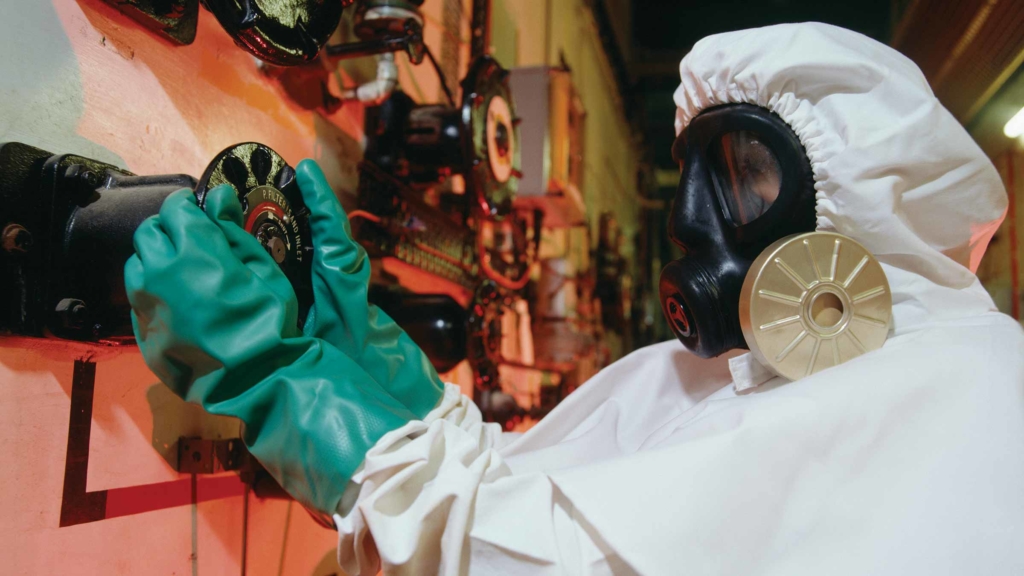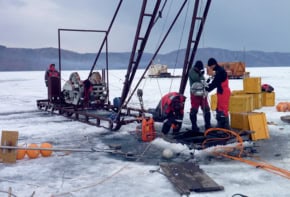Tushna Commissariat talks to Jim Gulliford about a new programme to train early-career nuclear physicists, and what a future in the field looks like today
Physicist Jim Gulliford has spent the past 30 years of his career working in the global nuclear industry, from France to the US. Since 2010 he has been employed at the OECD Nuclear Energy Agency (NEA) in Paris, as head of nuclear science and leading the agency’s international “data bank”. I caught up with Gulliford to find out what sort of career options are available for nuclear physicists joining the field today, and about his main project – the NEA’s newly launched Nuclear Education, Skills and Technology (NEST) framework. NEST’s main goal is to create a global network of universities, research institutes and businesses to help maintain and build the skills of the next generation of nuclear researchers. Such a network is especially needed today, when a large percentage of the current generation of nuclear experts is at or nearing retirement age.
What should early-career physicists coming into the nuclear field be considering?
I’m trying to imagine what it’s like to be a young physicist now; it must be a bit scary. Certainly, in the UK, and probably in other countries, there isn’t the same pipeline that there was when I started. There always used to be government-funded research programmes, which were international collaborations, and so you just found a way of doing the next thing. I think nowadays it’s harder.
Today, it probably depends what kind of physicist you want to be. If you are interested in experimental work, then you need facilities to go and work at, and be part of a multidisciplinary team. That’s hard to find in the UK now, so be prepared to work internationally. The more theoretical route is outside my experience, but I would say the way is through academia, and working at a big national research centre.
What are the hot topics in the nuclear industry that people starting out now will be working on in the next five or 10 years?
It’s material science. When I started, it was all about neutron physics. But as time has gone on, it’s become clear that all innovation now will depend on taking advantage of new materials. There is still a lot of work do to in the modelling area, as we are still relying on some fairly important approximations and experimental correlations. In contrast, in neutron science we can model things at a fundamental level now.
The real gains to be had are in the area of materials used in current reactors – those that are exposed to the highest radiation: the fuel, the fuel matrix, and the clamp. Also, some of the structural materials that operate in an extreme environment. Nowadays, we expect our reactors to keep going for longer than they were originally designed for, due to economic reasons, and so you have to able to predict how they’ll behave in the longer term. Will they stand up? What sort of maintenance might be needed? If you look to any advanced reactor design, the big question is how the materials behave – their ability to maintain their properties of containment, for example – and to get a better understanding of their chemical properties, such as corrosion.
Tell me about the NEA’s data bank.
The data bank operates as a repository and an archive for information – it includes data on experiments used to validate our simulation methods, to help understand the physics a bit better, so we can improve our experiments. We distribute the codes and software that people have produced over the years, so that they can be shared and improved. We’re responsible for making all reports – scientific, technical, engineering, as well as economic and safety reports – available to the NEA membership.
But we are also in the process of changing. Rather than acting as a passive archive, we’re now looking to engage with the user community, especially expert users. We want to benefit from their feedback on topics such as what should be the next experiment to do; what extra physics needs to be put into the codes and what the next application of the codes should be. We’ve always done training and been part of knowledge management in the data bank, but it’s more proactive now. And one of the drivers now is that there is a generation of people like me, who are moving into retirement, but who know what went wrong. We have the practical knowledge that comes with such experience. That aspect of knowledge management is important, and it’s part of where the data bank is moving – to create communication and hands-on engagement between the older and younger generation, rather than just be handing out CDs with stuff on them.

Tale of the atom tamers
How involved are you when it comes to helping government with policy decisions?
If you’ve been involved in NEA work for a decade or more, then you’re working with group of people who the policy-makers come to for advice. We also have a formal steering committee at the top level of the NEA, which includes the people connected to the policy-makers. We also have specific policy debates. We had one on the use of thorium a few years ago, and one on small modular reactors. In connection with NEST, two years ago we had a debate on educational skills. We pick topics and arrange for expert speakers to come and give an overview in a way that is relevant to what policy-makers need to know.
Could you tell me more about what the NEST framework is trying to achieve?
We have been developing NEST for two years now, but it is still very early days. The issue of a skills shortage in the nuclear industry has been around for quite a while. I’ve drawn on reports from as far back as 1993 where the danger of such a shortage was mentioned. By 2000 everybody was aware that we were heading for a really difficult situation. In 2012 there was yet another policy debate and report. This was slightly more optimistic, because we’d been through what was known as the “nuclear renaissance”. More universities were offering courses to nuclear engineers and scientists, and people were considering it a viable career option. But then we had the Fukushima nuclear disaster. In the years since the accident, there was more and more concern about where we’re going, and so everyone agrees that nuclear education is crucial.
NEST takes advantage of what an international organization like the NEA can do. While we can’t cover all the major skills required to train nuclear scientists, NEST is the starting point for creating the next generation of subject-matter experts – those at the top of the skills pyramid. The idea is that they would have a specialized technical skill and experience in one area, but also a broader view of the whole nuclear system. So, they may be a reactor physicist, but they would also know about safety, about licensing regulation and about social issues – the whole spectrum. But of course this kind of training takes time to do.
How is NEST going to be rolled out?
International projects are at the heart of the NEST concept. Students – we call them NEST fellows – will take on projects that are incorporated into an already existing programme at a university or institute, where they will be working alongside those with long-standing expertise in the field. So a fellow will get their specialist training in whatever their project is about. But they will also pick up implicit and tacit knowledge from the experienced people that they work with, and they’ll start to build a network. They’ll start to form relationships with the other NEST fellows, who may not necessarily be from the same technical discipline, but who will be part of the nuclear energy industry in some way. Hopefully they will meet at conferences, or collaborate on projects in the future, and form the kind of expertise network that is necessary.
The UK estimates that 7000 new people are required to come into the nuclear industry each year – we will be training only 1%. While that doesn’t sound like a lot, producing 70 subject-matter experts is a huge challenge. Hopefully there will be a trickledown effect from them as their groups grow and they get involved in mentoring programmes. Ten of the NEA countries have currently signed on to the programme, and we are working on getting others, including the UK, on board.
What sort of impact will Brexit have on the nuclear industry, especially when it comes to travel and international co-operation?
It won’t be so easy for British scientists to go and get a job in France, and vice versa – scientists in Europe might be a little wary about building a long-term career in the UK. But I think there may be some benefit in that the UK will realize it has to do something that actively facilitates its researchers to get involved in overseas activities. I suspect that the policy makers and the people who are planning the future research programmes will be looking now in some detail at ways of compensating for Brexit.




